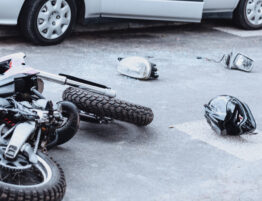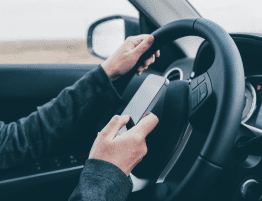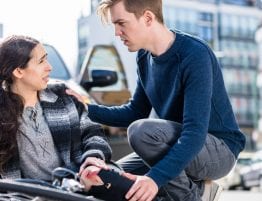
You and your friends may not be as wild as Marlon Brando in The Wild One, but you still like to ride together on a beautiful Florida day. Riding in a group can be safer than riding alone if you follow the right safety precautions.
Riding slow and blocking traffic, hogging both lanes so motorists can’t pass, or blowing by unsuspecting drivers at high speed can lead to accidents or road rage from the drivers you aggravate.
What To Do When Out With New Riders
If you’re riding with new riders, even more caution is required. New riders aren’t as experienced dealing with the ebb and flow of riding in traffic. They can be anxious about looking stupid and make bad decisions. Experienced riders need to be on alert and help new riders adjust to the group dynamic, learn hand signals and get comfortable in a pack.
One suggestion is to break large groups into smaller groups of less than a dozen riders to reduce the variables.
A well-organized group will meet before the ride to set standards, explain signals, and warn riders to allow a time and space margin. Watch for danger signs, decide what kind of group you are joining, and leave or reposition yourself when red flags pop up.
Tips For Safe Group Rides
Here are some tips from the Motorcycle Safety Foundation to help ensure a fun and safe group ride:
- Arrive prepared.
- Arrive on time with a full gas tank.
- Hold a riders’ meeting. Discuss things like the route, rest and fuel stops, and hand signals.
- Assign a lead and sweep (tail) rider. Both should be experienced riders who are well-versed in group riding procedures. The leader should be aware of each rider’s skill level before the ride and monitor the riders during the ride.
- Keep the group to a manageable size, ideally five to seven riders. If necessary, break the group into smaller sub-groups, separated by a few seconds, each with a lead and sweep rider.
- Ride prepared. At least one rider in each group should carry a first-aid kit and full tool kit, and all riders should carry a cell phone, so the group is prepared for any problem that they might encounter.
- Ride in formation. The staggered riding formation allows a proper space cushion between motorcycles so that each rider has enough time and space to maneuver and to react to hazards. The leader rides in the left third of the lane, while the next rider stays at least one second behind in the right third of the lane. The rest of the group follows the same pattern.
- A single-file formation with a minimum 2-second following distance is preferred on a curvy road, under conditions of poor visibility or poor road surfaces, entering/leaving highways, or other situations where an increased space cushion or maneuvering room is needed.
- Avoid side-by-side formations, as they reduce the space cushion. If you suddenly needed to swerve to avoid a hazard, you would not have room to do so. You don’t want handlebars to get entangled.
- Periodically check the riders following using your rear view mirrors. If you see a rider falling behind, slow down so they may catch up. If all the riders in the group use this procedure, the group should be able to maintain a fairly steady speed without pressure to ride too fast to catch up.
- If you’re separated from the group, don’t panic. Your group should have a pre-planned procedure in place to regroup. Don’t break the law or ride beyond your skills to catch up.
- For mechanical or medical problems, use a cell phone to call for assistance as the situation warrants.
- If a rider leaves during the ride, the rest of the group should re-form the staggered formation by crisscrossing into the next vacant position. Although it would seem more efficient for the column directly behind the missing rider to move up, we do not recommend it because passing another rider within a lane can be risky.
An Experienced Motorcycle Accident Lawyer
Attorney Frank Marsalisi believes that every client deserves his full attention. Your case will never be managed by a paralegal or case manager. Frank not only fi ghts for your rights, he handles your insurance and hospital issues so you can concentrate on your medical recovery.
If you can’t come to Frank, he’ll come to you. Frank will listen to your story. He’ll consider all the facts and assess your case. He’ll give you his best advice, without charging you a penny.
If you have a case, Frank will take it on. And you still won’t owe anything until you win a settlement. Frank will stand up for you against powerful, wealthy companies and people. And if your case goes to trial, Frank will represent you personally. Frank has always been on your side. He’s a St. Pete native who has always worked for the plantiff.
Personal attention to personal injury.











